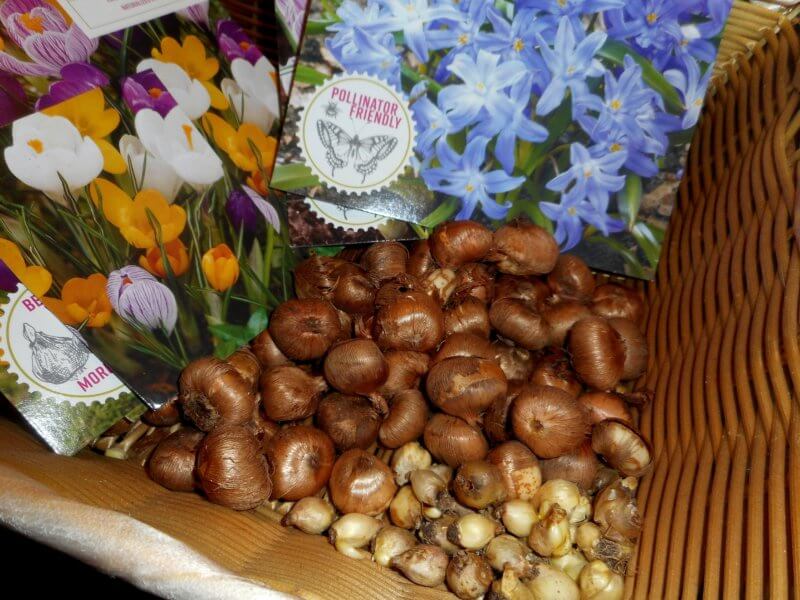Spring-blooming miniatures brighten winter’s end
There’s an old saying, “Good things come in small packages.” That’s certainly true of the tiny flowers that bloom in the spring. And fall is the perfect time to plant these bulbs.
We’re all familiar with the drifts of daffodils and tulips that brighten the view at winter’s end, but have you considered the supporting players in that panorama? Crocus probably comes to mind, but there are many other options for spring flowers that grow a mere 3-6 inches tall.
Among the first to bloom in the spring, snowdrops (Galanthus nivalis) live up to their name. These tiny white flowers with their drooping heads push through frozen ground as ice and snow begin their retreat. Snowdrops make a lovely show, particularly if planted in drifts.

Glory-of-the-snow (Chionodoxa) can often be seen as a flash of blue among the dull post-winter landscape, but they also are available in white and pink. They may be small, but mass planting makes quite an impact.
If you’re partial to blue, Iris reticulata, a dwarf iris, sports petite blue flowers with white and yellow markings. Grape hyacinth (Muscari) offers clusters of cobalt blue flowers atop its stem. Either will create a vibrant contrast when planted among bright yellow daffodils or a peaceful mood when combined with white tulips.
Another interesting spring bloomer is winter aconite (Eranthis hyemalis). This relative of the common buttercup is low growing with bright yellow flowers and forms mounded clumps.
And, of course, there are crocuses (Crocus vernus). These ever-popular spring-blooming bulbs can be found not only at garden centers but in grocery stores and other local retailers throughout the fall season. They come in a variety of colors, including white, yellow and purple.
The method you choose for planting will depend on the result you’re looking for. For individual placement, dig a hole 3-4 inches deep (see package directions for the specific bulb), place the bulb pointed end up and cover with soil. If you plan to line a path or walkway, you may find it simpler to dig a shallow trench that deep, scatter the bulbs in the trench, cover with soil and water the area.
If you’re planning to plant a larger area or a combination of bulbs such as daffodils and glory-of-the-snow, dig out the area you intend to plant to the depth needed for the largest bulb. Place those bulbs either individually where you’d like them to grow or, easier still, scatter the bulbs for a more natural look. Next, cover the larger bulbs with soil to the depth of the next smaller bulb.
For example, if you planted your larger bulbs (such as tulips) at 6 inches deep, you would cover them with soil until the planting area is at the depth for planting the smaller bulbs (such as crocus), approximately 3 inches deep. Again, place the bulbs individually or scatter them across the area. Then cover the bulbs with soil to reach the level of the surrounding ground and water the area.
Where to plant? Choose an area that will provide adequate sun, such as under deciduous trees or bushes that may provide full sun before they have leafed out in the spring. Soil should be moist and drain well. If too wet, the bulbs may rot.
When to plant? Now is the time. Even though most plants in the garden are fading and the air is chilly, as long as you can dig in the soil, you can plant spring-blooming bulbs. So, go for it.
Select your favorites and get them in the garden. When spring arrives, you’ll be glad you did.
(Deborah J. Benoit is a University of Vermont Extension master gardener from North Adams, Mass., who is part of Vermont’s Bennington County Chapter.)

